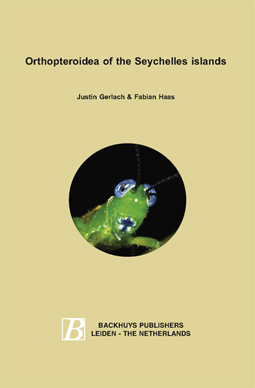

Seychelles Fauna Monographs
The Indian Ocean Biodiversity Assessment 2000-2005 reviewed
the biogeography of the Seychelles islands through systematic collecting of
all taxonomic groups. Biodiversity collecting for this assessment started in
2000 under a Memorandum of Understanding with the Seychelles government with
taxonomic support from 87 expert taxonomists in 20 countries.
These taxonomists reported the identification of a large number of previously
undescribed species and the material initiated taxonomic revisions of most
of the groups concerned.
These revisions are being published in widely dispersed academic journals,
most of which are not available in Seychelles. The only comprehensive taxonomic
treatments available cover dicotyledon plants and vertebrates. The information
generated by the project has been collated into a monographic series on the
Seychelles fauna. The aim of these monographs is to disseminate taxonomic
information in a form that can be easily utilised by future workers in the
region and by conservationists and researchers in Seychelles. This high quality
biodiversity information is essential for future sustainable biodiversity
management.
Further details of the Indian Ocean Biodiversity Assessment can be found
on the Nature Protection Trust of Seychelles web-site: http://members.aol.com/jstgerlach.
Contents
Introduction 4
History of orthopteroid research in Seychelles 4
Classification of Seychelles Orthopteroidea 6
Systematic section
Isoptera 8
Blattodea 12
Mantodea 28
Dermaptera 30
Orthoptera 44
Phasmatodea 66
Embioptera 70
Red Listing 70
References 74
Index 79
Colour plates 85
Introduction
The Seychelles islands comprise 115 islands in the western
Indian Ocean. These form
two main groups; the northern granitic islands and the southern, coralline
islands (Fig. 1-2).
The southern islands are less than 10m above sea level, representing raised
coral atolls or sand
cays (Matthews & Davies 1966; Stoddart et al. 1971). This results in limited
habitat variation
and correspondingly low species diversity. The granitic islands (Fig. 2) are
the remnants of
the Seychelles microcontinent which was isolated following the break-up of
Gondwanaland
65-100 million years ago. These are high islands reaching 905 metres above
sea level. This
results in great habitat diversity and high rainfall, contributing to the growth
of diverse rain
forest habitats.
The following account concerns all species of Orthopteroidea recorded in the
islands.
The Orthopteroid insect orders comprise the crickets, katydids and grasshoppers
(Orthoptera),
stick and leaf insects (Phasmatodea), web-spinner (Embiidina) and the Dictyoptera
(termites,
cockroaches, mantises and earwigs). This is an early group of insects, dating
back some 300
million years.
The Orthopteroidea of Seychelles comprise 168 species (56 endemic, 106-107
indigenous, 4-5 introduced). The highest level of diversity is found on Silhouette
(80 species,
39 endemic), Mahé (80 species, 27 endemic), Aldabra (34 species, 11
endemic) and Praslin
(33 species, 11 endemic). Lower levels of diversity are found on the smaller
coral islands (e.g.
Desroches 9 species, 2 endemic, Assumption 4 species, 1 endemic). The indigenous
species
are predominantly regional endemics (26% found in the Western Indian Ocean),
African (23%)
or Palaeotropical species (19%). A much lower proportion has a wider distribution
- 13%
Asian or Indo-Pacific, 12% Pantropical and 10% Cosmopolitan.
Distributions are given and the conservation status discussed using the IUCN
Red
List criteria (IUCN 2001) and following the assessment in Gerlach et al. (2005).
Non-native
species have not been assessed.
For most genera a representative species is illustrated (Plates 1-4). The scale
bar on
the plates represents 1cm. Characters used in identification are shown in Fig.
3.